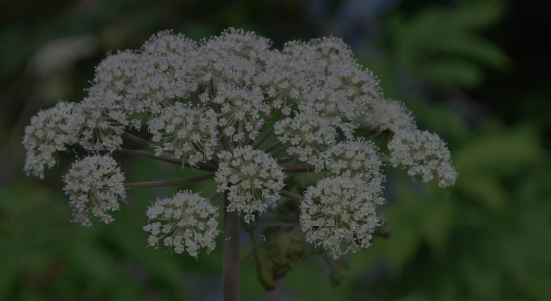
Invasive Species | Terrestrial Plants
Woodland Angelica
Woodland Angelica
(Angelica sylvestris)
French common name: Angélique des bois
Woodland angelica is a perennial plant native to Eastern Europe and Eurasia and is part of the Apiaceae (carrot and celery) family, the same family as Giant Hogweed and Cow Parsnip.
Description:
This invasive plant can be found in wet and disturbed areas, and is further distributed through flood events when plant seeds are washed downstream.
Problem:
Woodland Angelica is an aggressive invader and can rapidly establish in a wide variety of environments. Once established, dense monocultures of Woodland Angelica outcompete native plant species and provide little benefit to local wildlife. Similar to Cow Parsnip and Giant Hogweed but less severe, with the sap of Woodland Angelica can cause a dermatitis type skin reaction. Use caution when cutting or managing this plant.
Species identification:
Woodland angelica is a medium to tall sized plant and when mature can grow to 1-3 meters in height. It has a smooth hollow stem, that is green and often has a purplish hue throughout. The leaves are pinnate leaflets with fine toothed edges. Mature stems and sub-branches have an umbel or umbrella shaped inflorescence made up of many white flowers. It can be found along roadsides, in ditches, fields and field edges and along trails.
How it’s spread:
Establishing along shorelines, ditches, and other disturbed areas, Woodland Angelica seeds can be transported by floodwaters and other natural movements by wildlife. This invasive plant is further distributed throughout the province unintentionally by human movement and equipment that can transport invasive plant seeds and parts.
It’s important if you are walking through areas, walking your dog, biking, or doing other outdoor activities where Woodland Angelica may present to Play, Clean, Go. Clean off all equipment, the bottom of your shoes, and other materials to ensure you don’t transport invasive plant seeds and parts.

